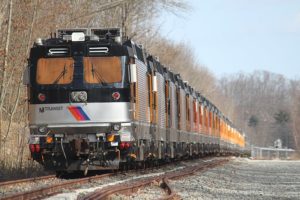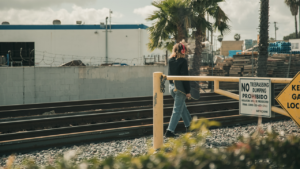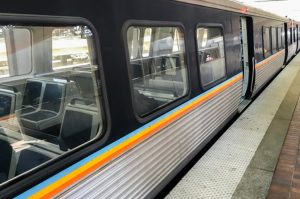Metrolinx begins another round of work on Kitchener Line
Written by Jocelyn Stenner, Metrolinx Capital Communications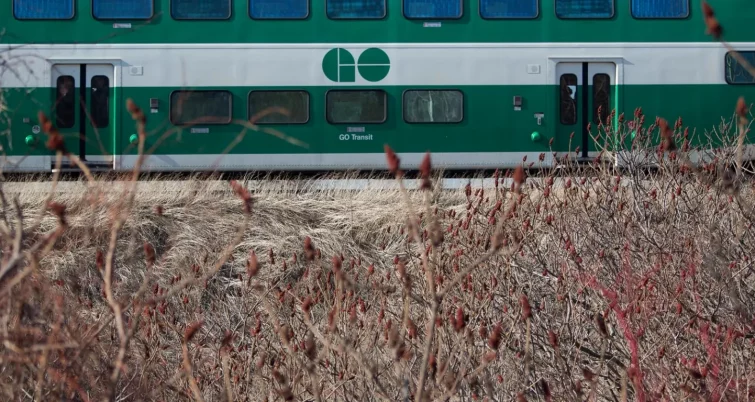
More work is happening on the Kitchener Line that will help bring two-way, all-day service from Toronto’s Union Station to Kitchener GO Station.
The latest round of improvements includes upgrades to Bloor GO Station and the West Toronto Railpath that will improve customer experience and increase access and connections in the community.
Transforming the Kitchener Line into a two-way, all-day rapid transit line is a massive undertaking.
The project is made up of many different pieces of work that, once complete, will fit together seamlessly to deliver increased service and connections from Union Station to Kitchener GO Station.
Metrolinx has been making improvements to bridges, tracks and stations along the Kitchener Line in preparation for the larger GO Expansion project – the largest transit expansion in Canadian history.
In 2018, Metrolinx completed the installation of a fourth track from Nickle Street to Black Creek Drive.
Now, the transit agency is making more upgrades in Toronto between Black Creek Drive and Lansdowne Avenue that will further support the future GO Expansion program.
Transforming the Kitchener Line into a two-way, all-day rapid transit line is a massive undertaking.
The project is made up of many different pieces of work that, once complete, will fit together seamlessly to deliver increased service and connections from Union Station to Kitchener GO Station.
Metrolinx has been making improvements to bridges, tracks and stations along the Kitchener Line in preparation for the larger GO Expansion project – the largest transit expansion in Canadian history.
In 2018, Metrolinx completed the installation of a fourth track from Nickle Street to Black Creek Drive.
Now, the transit agency is making more upgrades in Toronto between Black Creek Drive and Lansdowne Avenue that will further support the future GO Expansion program.
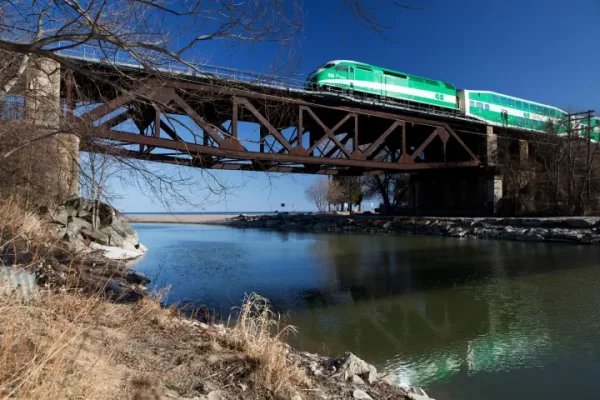
What’s next for the Kitchener Line?
- A new fourth track will be installed from Lansdowne Avenue to Dupont Street to increase capacity on the Kitchener Line
- A new pedestrian tunnel will connect Bloor GO Station with Randolph Avenue and a covered pedestrian pavilion will be added to access the tunnel
- Realignment of the West Toronto Railpath and the addition of plantings, gardens and seating
- A new community park at Ernest Avenue
- Noise barrier and retaining wall installation
- Modifications to the existing Bloor Street West pedestrian bridge, which will include a taller fence on the west side of the bridge to increase safety
This round of work is starting this month and will be done by 2025.
Let’s dig a little deeper into the next round of upgrades planned along the Kitchener Line
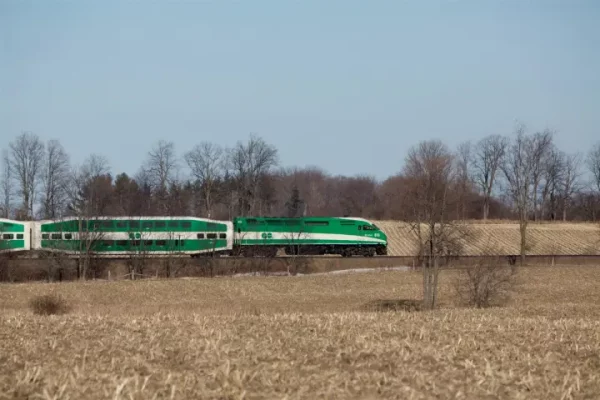
Track work
As part of this project, an approximately 2.5-kilometer section of fourth track will be installed from Lansdowne Avenue to Dupont Street.
Why is adding a fourth track important? Think of it like expanding a busy road. When planning for two-way, all-day go service – four lanes are better than three.
The new fourth track will support future service increases of trains every 15 minutes or better on the Kitchener Line up to Bramalea GO as more trains can travel in both directions along the corridor.
This work – and projects like the ongoing Kitchener Expansion – will prepare the Kitchener Line for GO Expansion and will lay the foundation for future electrified service.
Bloor GO Station
A new pedestrian tunnel will connect Bloor GO Station with Randolph Avenue and a covered pedestrian pavilion will be added for customers to access the newly constructed tunnel.
Bloor GO Station will have a total of three entrances after the completion of this project, enhancing customer experience and providing improved station access and connections.
The transit agency is planning more upgrades at Bloor GO Station as part of a future project that will see a tunnel extension connecting Bloor GO Station to Dundas West TTC Station, providing a seamless connection for pedestrians between these two transit points.
This work is planned to start in early 2023.
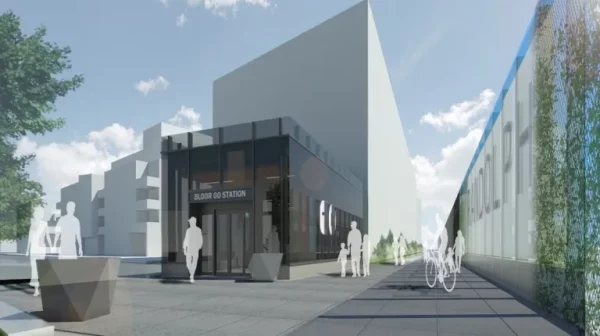
West Toronto Railpath
The West Toronto Railpath is a multi-use trail owned and maintained by the City of Toronto.
The path runs alongside the east side of the Kitchener corridor from Cariboo Avenue to Dundas Street West (at Sterling Road).
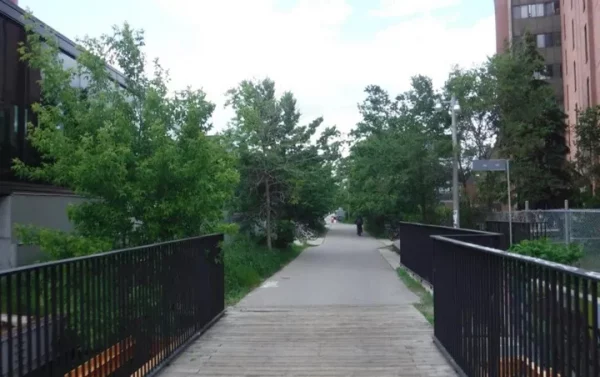
In 2016, the City of Toronto completed an environmental assessment that studied the extension of the railpath. Since then, Metrolinx has worked collaboratively with the city throughout the detail design and construction planning for both the re-alignment and extension of the railpath.
The existing railpath will be re-aligned further east from Wallace Avenue to just south of Bloor Street West – 675 meters in total – to allow enough space for the new fourth track to be installed.
The work in the railpath will include the addition of new plantings, seating, bike storage, lighting, artistic street signage and community connection points.
Once this work is completed, the railpath will be 3.6 meters wide in most sections.
Additionally, on behalf of the City of Toronto, Metrolinx will be completing a two-kilometer extension of the railpath as part of a future phase of work from Dundas Street West to Abell Street (at Sudbury Street) starting as early as spring 2023.
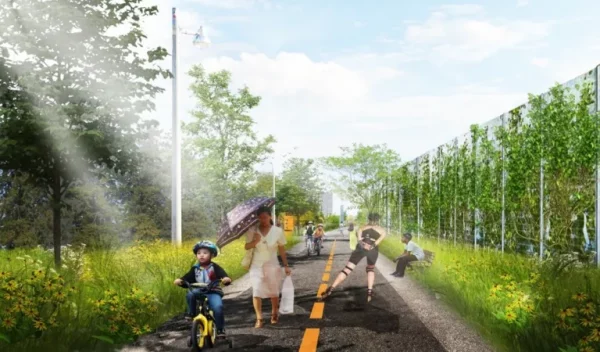
This next phase of work will see the railpath extended and includes four new pedestrian-cycle bridges over the Barrie GO Line tracks, Lansdowne Avenue, Brock Street and Queen Street West, and additional community connection points along the West Toronto Railpath.
Ernest Park
A new community hub along the railpath will be completed as part of this project – Ernest Park, a 740 square meter community space located along the railpath at Ernest Avenue.
The park will feature native pollinator gardens, custom wood seating, new light posts, low metal fences to protect the pollinator gardens and five new interpretive signage posts. The signage will overview the history of the railpath.
Vegetation
During this project, some existing vegetation will need to be removed.
The area contains many invasive species such as Siberian elm, Norway maple, Manitoba maple, and tree-of-heaven, which will be replaced – where space permits – by native trees, shrubs, and vines as part of the restoration phase of the project.
These new native plantings will include sections of mixed woodlands, pollinator gardens and dry and wet meadows. Once complete, the new plantings will enhance the ecology in both the realigned and extended sections of the railpath.
Vegetation that will be retained will be protected during construction.
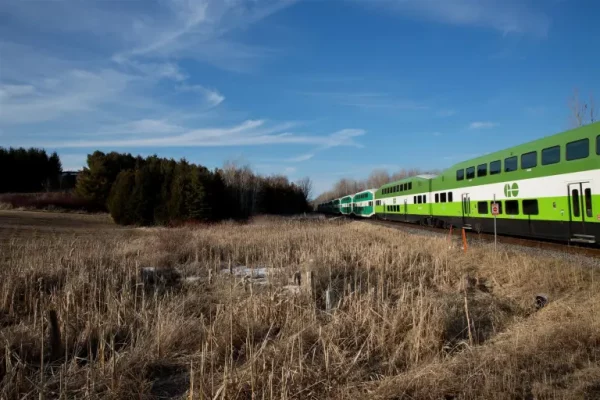
Noise walls
As part of this project, several noise walls will be installed on the west side of the railpath from just north of Ruskin Avenue to Dundas Street West and will be around five meters high.
The installation of noise walls will mean less train noise from the nearby tracks.
Noise walls will be screened with vegetation that will help them blend in with the natural landscape and will also be graffiti resistant.
The start of this project means one more important piece of the puzzle has been put into place to enable Metrolinx to deliver two-way, all-day GO service to the people across Toronto, Brampton, and on to Kitchener.
If you have questions about this project, contact the Toronto West community engagement team at [email protected] or 416-202-6911.



